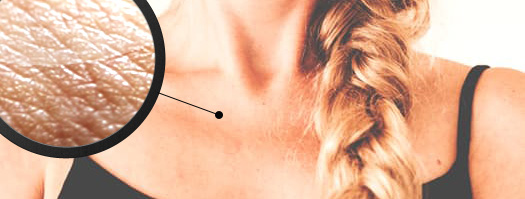The skin is the most extensive organ of the human body with an average surface area of almost 2 m².
It consists of 3 superimposed layers: the epidermis, dermis and hypodermis.
The epidermis
The epidermis is the most superficial layer of the skin. It renews itself permanently with a renewal cycle of 21 days.
It is made up of several sublayers:
• The stratum corneum: this is the most superficial layer of the skin consisting of flat cells and corneocytes, which form an impermeable lining. This surface permanently exfoliates.
• The stratum granulosum: a thin layer consisting of diamond-shaped cells. This is the layer in which keratin accumulates.
• The Malpighian layer: a filamentous layer located above the basal layer. This forms the greatest part of the epidermis.
• The basal layer: the deepest layer in the epidermis. This is the layer in which melanocytes, which produce melanin and protect against UV, are found and which is responsible for suntanning.
Langerhans cells, which are immunological sentinel cells to detect infections, are also found in the epidermis.
The dermis
The dermis (or corium) nourishes and supports the epidermis. It contains a connective tissue which is 4 times thicker than the epidermis and is formed from an interwoven network of collagen fibres which produce the scarring tissue to repair cuts or scratches and elastic fibres, which enable the skin to return to its original position after being stretched.
The dermis contains numerous blood and lymph vessels, nerves, nerve endings and sweat glands, which provide transpiration and the base of the pilosebaceous system.
The dermis consists of three layers:
• The papillary dermis: this is the most superficial layer separated from the epidermis by the dermo-epidermal junction.
• The reticular dermis: this is the thickest layer which contains the elastic fibres.
• The deep dermis: this is the deepest layer in contact with the hypodermis.
The hypodermis
The hypodermis is a highly vascularised subcutaneous adipose tissue layer which acts as the interface between skin and the organs which it covers and buffers pressures applied to the skin.

